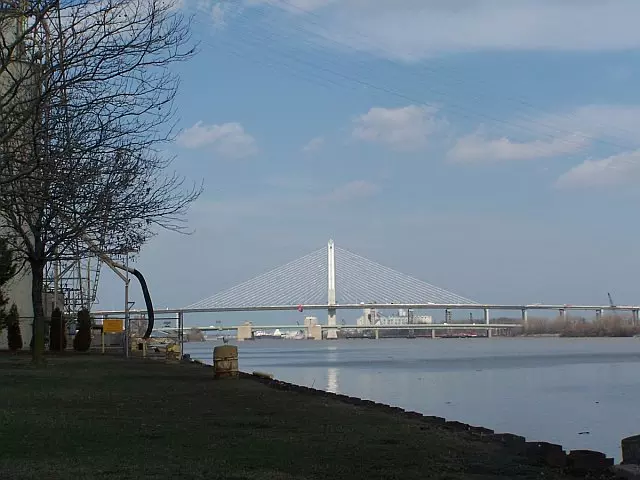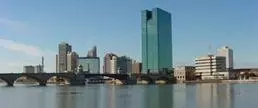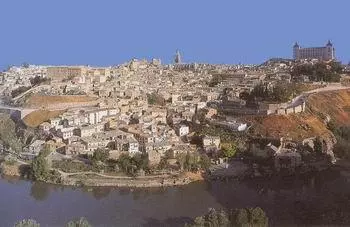Toledo Sister Cities International (1993-Present)
 Toledo Sister Cities International Logo
Toledo Sister Cities International Logo
In 1992, the sister city agreements of Toledo, Ohio were given to Toledo Sister Cities International (TSCI), a partnership of various city of Toledo branches of government.
Although the partnership between Toledo, Ohio and Toledo, Spain began in the 1930s, it was not until 1967 that an international entity, Sister Cities International (SCI), was created. SCI was created in response to a massive increase in Sister City agreements, some of which were spurred along by a proclamation made by US President Dwight D. Eisenhower.
TSCI was created by a group effort between various branches of the City of Toledo, Lucas County, and the state of Ohio. SCI was officially incorporated in the Toledo city government in 1993.
The mission statement of TSCI, as taken from their website, is:
. . .a not-for-profit, nongovernmental organization dedicated to enriching our community through the spirit of international cooperation. We provide, promote, and invite global understanding through mutually beneficial economic, educational, and cultural exchange.
In 2002, Toledo, Ohio hosted the "Sister Cities Annual Conference," which brought together more than 700 Sister City participants from around the globe.
Currently, Toledo Sister Cities International maintains the sister city agreements with the cities chosen prior to the organization’s creation, as well as the six sister city agreements they have fostered and the various other relationships created by the organization.
Two Toledos, 2007
Toledo, Ohio
 Map of Ohio indicating the location of Toledo
Map of Ohio indicating the location of Toledo
Much has changed in the two Toledos during the seven decades of their union. Toledo, Ohio has been revitalized over the past twenty years. The once-booming downtown area, a ghost town for the last few decades, has been the focus of a massive revitalization effort. Older buildings have been torn down and replaced with modern ones. The buildings that were spared have been rezoned and modernized and now house restaurants, bars, and other entertainment and commercial endeavors. Toledo's borders have also grown. As the population increased, the city began to annex neighboring towns and villages, adding ten thousand people in thirteen annexations in 1950 alone. In 1967, the University of Toledo was added to the state university system.
The growth was not without its growing pains. Labor and political issues sparked protests and marches, and various urban renewal projects drained funds. Mother Nature also played a part in shaping Toledo history. On Palm Sunday in 1965, a tornado tore through North Toledo, killing 14 and injuring almost 200. Blizzards in 1977 and 1978, with record low temperatures and snowfall accumulations, crippled the city.
Over the past twenty years, the city has continued to grow. Two minor league sports teams now inhabit the city, and the revitalization of the downtown and riverfront continues to beautify and modernize Toledo.
 The Veterans' Glass City Skyway; Toledo Skyway Bridge
The Veterans' Glass City Skyway; Toledo Skyway Bridge
Toledo, Spain
The past half century has also seen the revitalization of Toledo, Spain. After the Spanish Civil War, Toledo was relatively stagnant during the Franco regime. With the coming of democracy in the late 1970s, Toledo once again began to regain some of its past glory. The first Spanish capital city was a capital once again, this time of the Castilla La Mancha region, one of the 17 newly created regions that resemble federal states.
 Map of Spain indicating the location of Toledo
Map of Spain indicating the location of Toledo
With the coming of democracy in the late 1970's Toledo once again began to regain some of its past glory. The first Spanish capital city was a capital once again, this time of the Castilla La Mancha region, one of the 17 newly created areas that resemble federal states.
 Alcazar in Toledo, Spain; also home to one of Spain's National Archives
Alcazar in Toledo, Spain; also home to one of Spain's National Archives
Here are various reviews and other news items about the recent documentary, Two Toledos. The film was a collaborative work by local filmmakers Joel Robert Washing & Jacob David of Toledo, OH. The film commemorates the 75th anniversary of the Sister City partnership between Toledo, Ohio and Toledo, Spain. The documentary centers on the two distinct in style, yet similar in thought, art communities in Toledo, Ohio and Toledo, Spain. The main vehicle for telling the story of the two Toledo's art scenes is interviews with artists in both communities.


